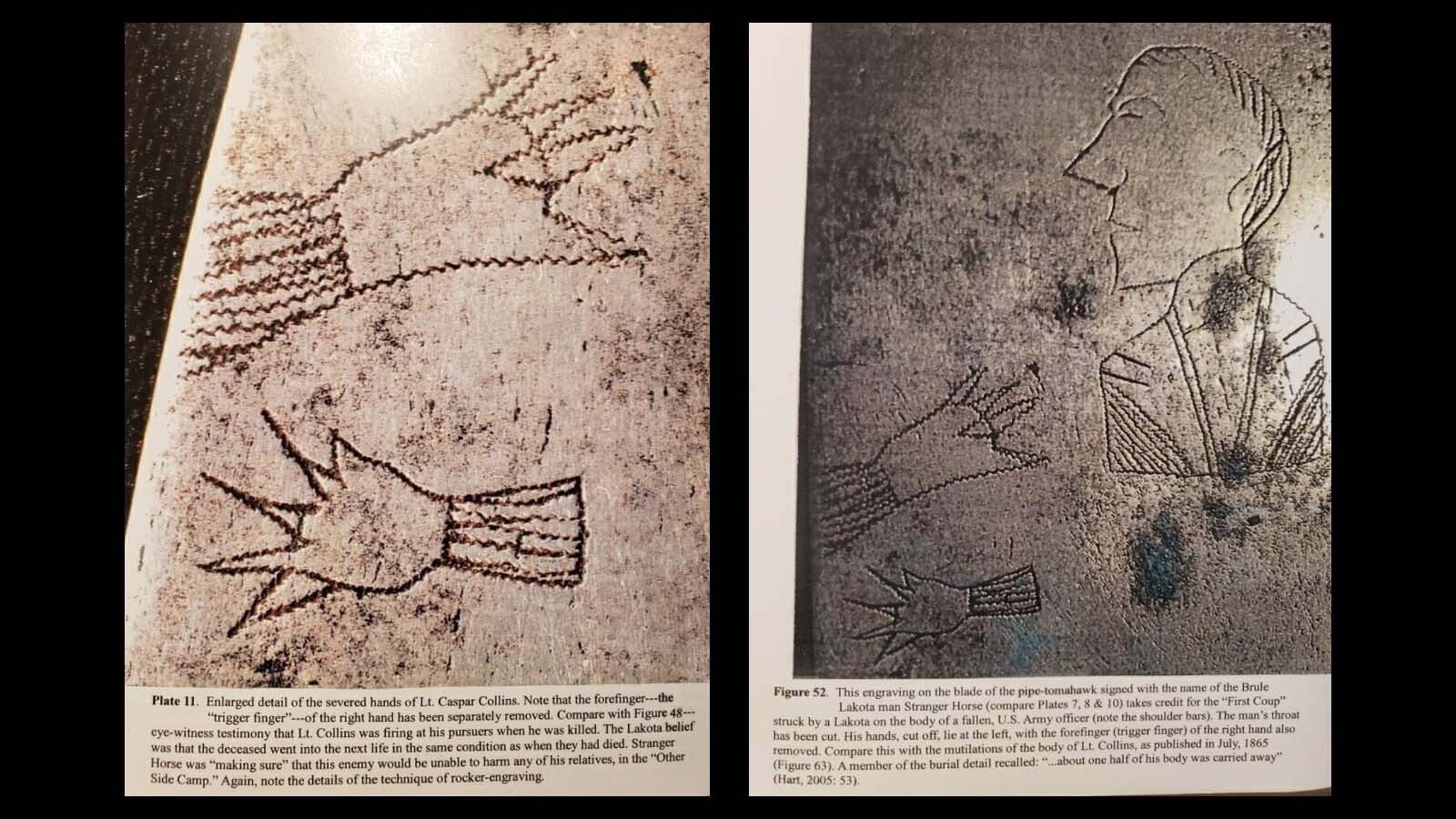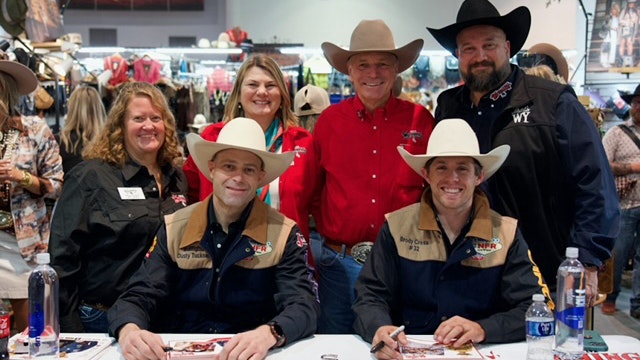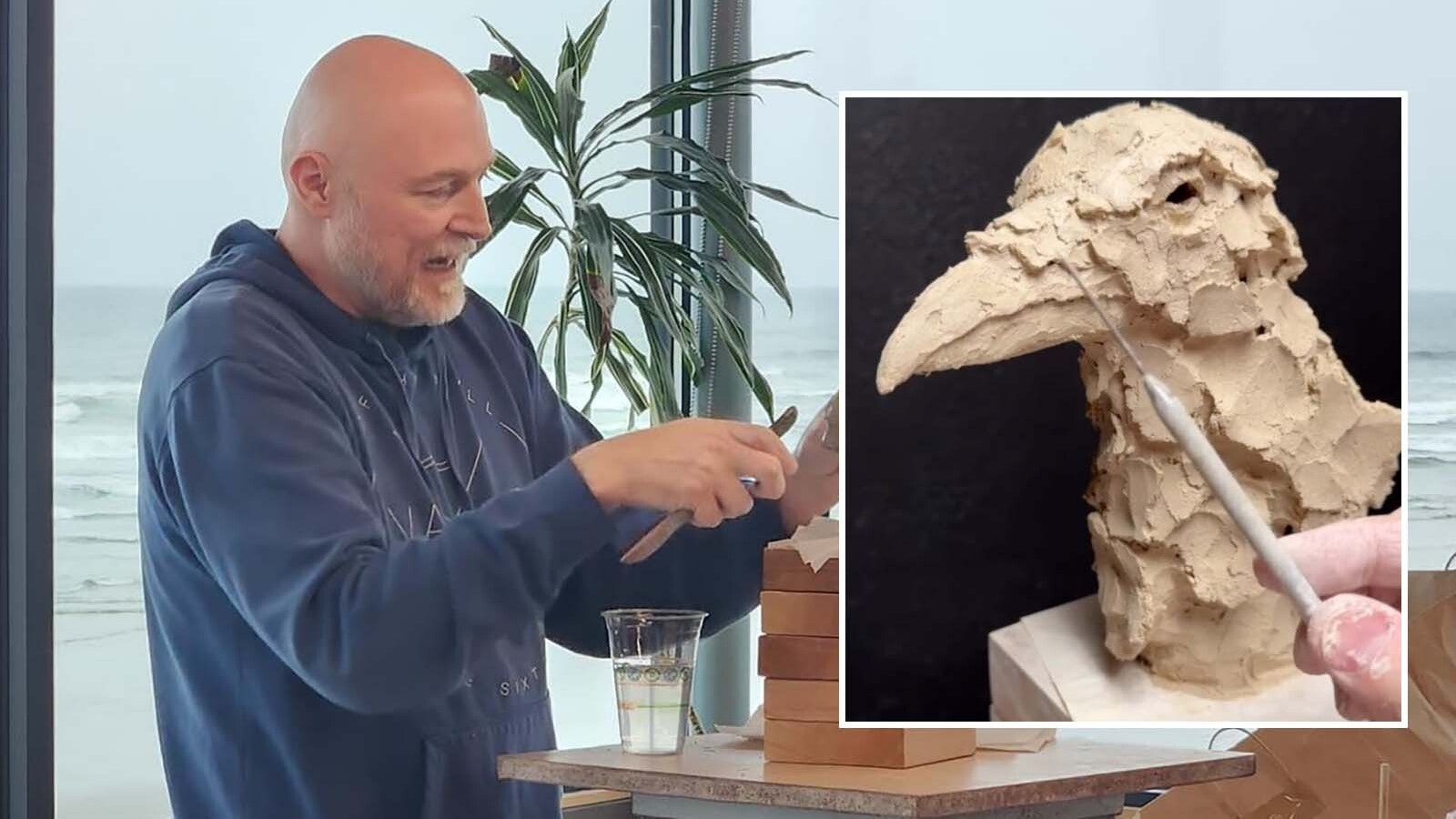The next act in the 160-year saga of a pipe-tomahawk bought by a Wyoming artist from an Arizona collector and linked to the killing of Ohio 11th Cavalry Lt. Caspar Collins — for whom the Wyoming city is named — did not go according to the script.
The last scene was in 2019, when the Casper Star-Tribune published a front-page story on the weapon, how it was discovered and its authenticity. The story was republished in papers across the state.
The artifact’s co-owner is Bob Coronato of Hulett, a nationally recognized Western artist and owner of Rogues Studio and Gallery.
He and co-owner Larry Robinson’s goal in buying the piece had been to ensure that the tomahawk remained in Wyoming.
But an attempt to have it donated and displayed at the University of Wyoming fell apart when the director of the university’s American Heritage Center questioned the piece.
“I talked to the (state) archives in Wyoming, and they said they would love to have it, but there was nobody at the state level (whose) job was to raise funds for acquisitions like that,” Coronato said. “And then there was a gentleman that wanted to purchase it and donate it to the University of Wyoming, and that’s where it went absolutely squirrelly.”
The ‘Yard Sale’
Coronato said Robinson had initially bought some items at a type of “yard sale” at the home of a collector of artifacts in Arizona, then was later contacted about the tomahawk that had been found in a drawer and asked if he was interested.
Coronato, who lives in Arizona for half the year, and Robinson went to the house to see the item, and they immediately understood its value.
Coronato said he contacted Mike Cowdrey, a friend and expert in Indian art, artifacts and culture, for his insight on the piece.
Cowdrey verified from the engravings on the tomahawk’s blade the weapon’s authenticity and owner as Brule Lakota warrior Stranger Horse as well as the link to the Battle of Platte Bridge Station.
“No one other than a few of the Indian combatants has ever known who was involved in killing Caspar Collins,” Cowdrey wrote the Star-Herald Tribune in 2019 in an email. “This tomahawk, signed with the name of a young Lakota who depicted the lieutenant’s death on the blade of his weapon, is as close to a confession as we might ever expect.”
The Engraving
As part of a provenance that Cowdrey authored on the artifact, he wrote about the engraving on the blade of the pipe-tomahawk that included the signed name of Stranger Horse and noted that he took credit for the “first coup” struck by a Lakota on the body of a U.S. Army officer.
The officer was represented by bars. The engraving showed the man’s throat had been cut and his hands cut off with the trigger finger of the right hand removed.
The tomahawk was made of blacksmith-forged steel and engraved etchings on the side that would be incredibly difficult to reproduce in the modern era.
Coronato said that during his experience as a collector, he finds historic items in the most unlikely places. The important part is recognizing when something is valuable and historic and that was what he and his friend saw in 2019.
He said both he and Robinson have been acquiring and selling artifacts and art for many years. The pipe-tomahawk was a huge find.
“That was the miracle that it went from Wyoming in 1865 and the Battle of Platte Bridge Station to a yard sale in Mesa, Arizona, without being damaged, without being cleaned, without being taken apart,” he said. “That was a miracle.”
Bid In A Hat
The tomahawk seller set up a mini auction where potential buyers of the tomahawk had to “put down the most you are willing to pay” with their name on a sheet of paper and drop it in a hat, Coronato said.
There was only one bid and no opportunity to know what anyone else bid.
Coronato contacted Cowdrey because Cowdrey has worked with museums across the country and authored several books and articles related to Native American art and culture as well as been an expert to review other author’s manuscripts on Native American art and culture.
After getting Cowdrey’s feedback verifying its authenticity, he understood that he and Robinson had to dig deep to make the purchase.
Coronato said the pair’s purchase was made with the intention of reselling it in a way that would allow Wyoming and the public to benefit.
Coronato said he did not have the money to buy Robinson’s half of the artifact ,and Robinson is older and they needed to move the object on.
The tomahawk was shown to a person at the state archives and to the Fort Caspar Museum, but Fort Caspar officials were worried about security, he said.
Coronato said when he showed the item, he did not offer it for sale but was just seeking interest in a potential home for it.
Fort Caspar Museum Director Rick Young said he remembers a conversation, paperwork and photos of the weapon, but does not recall seeing it.
He said he doesn’t recall a conversation about security being an issue and that the museum has a security system that he believes would have been adequate.
Young said the only way the museum could have had the weapon was through a donation — it would not have been able to purchase it.
Initially, Coronato said he sought to see if he could find a donor who would be interested in buying the tomahawk for display at the Wyoming State Archives, but when he found a willing buyer, the buyer wanted it at the University of Wyoming and also wanted to be sure it would be displayed in a way the public could see it.
Coronato said a person associated with billionaire Bill Koch’s Old West town in Colorado and who vetted the artifacts for that town saw the tomahawk and offered to volunteer to help with setting up a proper display at the university.

University Of Wyoming Offer
Coronato said he sent a sketch of the provenance — the document used to prove origin and chain of custody — but not the full provenance to be hand carried to the University of Wyoming president to see if there was interest.
As it turned out, there was not.
Director of the American Heritage Center Paul Flesher told Cowboy State Daily via email that his understanding was that the university was asked about “whether the university should purchase the item at a cost of approximately $150,000.”
He said at that time in 2019 and 2020, the university was still in “shock” from significant cuts imposed on it a few years earlier.
“In that light, it looked like an extravagant expense which the Legislature would surely disapprove of and which the Center could not afford,” he said.
Flesher said he still did “due diligence” on the item and “consulted with experts in the field who were associated with Wyoming institutions and were experts in aspects of the history of the state. It turned out that the tomahawk had been offered to many of the usual institutions specializing in Wyoming or Indian history.”
Flesher said he understood that the Buffalo Bill Center for the West had been offered the weapon and “did not think the item was authentic and so turned it down.”
He said he did not want to “gamble tens of thousands of dollars that they were wrong.”
Coronato said he never mentioned any price to the university or offered the tomahawk for sale. The offer to the university was whether it would display the artifact after someone bought and donated it, he said.

University Never Saw Weapon
Coronato said no one at the university ever saw the tomahawk to judge its authenticity. He also said he never offered it for sale to any other institution in the state, but showed it to the State Archives.
A board member at the Buffalo Bill Center for the West did know about the weapon, Coronato said. But he never offered it for sale to the Buffalo Bill Center for the West.
The Buffalo Bill Center for the West’s spokesman Ken Straniere said the center “can’t comment on something which occurred many years ago.”
Flesher said he had “weekslong discussions” via email about the weapon with “people who supported the claim that the tomahawk was authentic. He said in his opinion, the arguments were “inconclusive.”
“When my discussants pointed to their ‘experts,’ they were people on TV shows, not professional historians. In the end, the real problem was one of provenience: where did the tomahawk come from? No one knew,” he said. “No one could trace it back more than a few decades — to an estate sale — not to the mid-20th century and certainly not to the mid-19th century.”
Coronato said Cowdrey wrote an extensive provenance on the piece “an inch thick” soon after he had sent the template of the provenance to the university.
Coronato also said Cowdrey’s provenance was verified by Ted Trotta, a founding member of the Antique Tribal Art Dealers Association and original member of the New York Counsel for the Smithsonian’s National Museum of the American Indian in Manhattan, New York.
Trotta also appraises tribal arts on the popular PBS “Antiques Roadshow” program.
Trotta characterized the tomahawk as the “greatest warrior item from its time period because it tells its own story,” Coronato said.
Attempts to reach Trotta were unsuccessful.
‘Thorough’ Provenance
The provenance was footnoted, annotated and “as thorough as you can get,” even including references to the official military report on Caspar Collins death and the mutilation of his body that matched the pictograph etching on the tomahawk blade, Coronato said.
“Nobody questions Mike Cowdrey — I mean, there are only so many experts,” Coronato said.
He said Cowdrey is “hard to get a hold of” and does not have a telephone. He has not been able to make contact with him for the past year.
As a collector himself, Coronato said he has had five of his items over the years go to places like the Smithsonian, Metropolitan Museum of Art and an item that was on a world tour.
“I mean, we’re not talking about a guy in a junk store who found something,” he said. “I mean, this is what I do.”
Coronato said he ended up making one phone call and selling the tomahawk to a private collector who lives out of state. He had to sign a non-disclosure agreement about the sale.
How much is something like the pipe-tomahawk worth?
“It’s priceless,” Coronato said. “A Porsche is $250,000 and there are 10,000 Porsches.”
To have been able to hold the pipe-tomahawk, Coronato said, brings you closer to the people of time period.
He said other warriors at the Battle of Platte Bridge included Crazy Horse and Red Cloud. After a successful battle, the pipe portion of the artifact would have been smoked.
“That pipe was shared,” Coronato said. “Who was it shared with? Well, it’s speculation that it was Crazy Horse and Red Cloud, but they were of the same age and (all Lakota) so, of course, they smoked that pipe.”
Stranger Horse
After participating in the Battle of Platte Bridge Station as a young warrior, Stranger Horse in 1876 went on to be a scout for Gen. George Crook and later became a chief.
In November 1921, he was chosen to be one of four native chiefs to travel to Washington, D.C., and lay a coup stick and war bonnet on the grave at the Tomb of the Unknown Soldier.
Each chief was chosen because of his history in the West and the fact that they had once fought U.S. soldiers before making peace, according to an article in the Holyoke, Massachusetts, newspaper the Holyoke Daily Transcript on Nov. 7, 1921.
Coronato said he remains disappointed that the pipe-tomahawk did not stay in Wyoming.
He said it represented two warriors, Collins and Stranger Horse, who were about the same age fighting to protect their own ways of life.
“One went on to become head chief and the other went on to have a city named after him,” Coronato said. “It tells an amazing story of Wyoming at a time where you have two cultures clashing.”
Dale Killingbeck can be reached at dale@cowboystatedaily.com.









